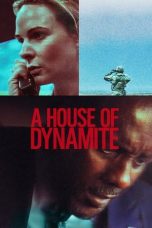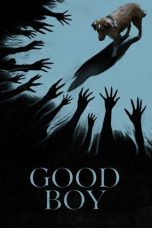The Wicker Man (2006) Movie Review: A Misguided Remake
“The Wicker Man,” directed by Neil LaBute and released in 2006, is a remake of the 1973 British horror classic of the same name. Starring Nicolas Cage, this version attempts to reinterpret the eerie and unsettling narrative of the original film but ends up delivering an unintentionally comedic and disjointed experience. Despite its star power and atmospheric setting, the 2006 remake fails to capture the essence of the original, resulting in a film that is more infamous for its absurdity than its horror.
Plot Overview
The film follows Edward Malus (Nicolas Cage), a California highway patrol officer traumatized by a tragic accident. When he receives a letter from his ex-fiancée, Willow (Kate Beahan), pleading for help in finding her missing daughter, Rowan, Edward travels to the remote island of Summersisle. Upon arrival, he discovers a matriarchal society led by Sister Summersisle (Ellen Burstyn), where pagan rituals and strange customs are the norm.
As Edward investigates Rowan’s disappearance, he encounters increasingly bizarre and hostile behavior from the island’s inhabitants. His search leads him to uncover the dark secrets of Summersisle, culminating in a shocking and fiery conclusion that mirrors the climax of the original film.
Character Dynamics and Performances
Nicolas Cage’s performance as Edward Malus is one of the most memorable aspects of the film, though not necessarily for the right reasons. Cage’s portrayal is marked by over-the-top and erratic behavior, resulting in scenes that have become infamous for their unintentional comedy. His exaggerated reactions and dramatic outbursts, including the now-iconic “Not the bees!” scene, overshadow the film’s attempt at serious horror.
Ellen Burstyn as Sister Summersisle provides a strong and commanding presence, but her character lacks the subtle menace of Christopher Lee’s Lord Summerisle from the original. Kate Beahan’s Willow is similarly underdeveloped, serving more as a plot device than a fully realized character. The supporting cast, including Frances Conroy and Molly Parker, deliver competent performances but are hindered by the film’s inconsistent tone and weak script.
Visual Style and Production Design
The film’s visual style and production design are among its few strengths. The island of Summersisle is depicted with a sense of isolation and foreboding, with lush forests and rustic buildings contributing to the eerie atmosphere. The cinematography captures the natural beauty of the setting, contrasting it with the unsettling rituals and practices of the island’s inhabitants.
However, the film’s attempts to create tension and suspense often fall flat, relying too heavily on jump scares and contrived plot twists. The use of symbolism and pagan imagery, which was integral to the original’s unsettling atmosphere, feels forced and superficial in the remake.
Themes and Missteps
“The Wicker Man” (2006) attempts to explore themes of faith, sacrifice, and the clash between modernity and ancient traditions, much like the original. However, the film’s execution is marred by a lack of coherence and subtlety. The feminist twist, with a matriarchal society replacing the original’s patriarchal one, is an interesting idea but is poorly developed and fails to add depth to the narrative.
The remake’s biggest misstep is its inability to balance horror and suspense with its unintentional comedy. The film’s serious moments are undermined by Nicolas Cage’s outlandish performance and the absurdity of certain scenes. This tonal inconsistency prevents the film from building the sustained tension and dread that made the original so effective.
Reception and Legacy
“The Wicker Man” (2006) was panned by critics and audiences alike, criticized for its poor writing, direction, and performances. It has since gained a cult following, primarily for its unintentional humor and Nicolas Cage’s eccentric portrayal. The film’s infamous scenes have become popular internet memes, cementing its status as a so-bad-it’s-good classic.
Despite its failure as a horror film, “The Wicker Man” (2006) serves as an interesting case study in how not to approach a remake. It highlights the importance of understanding the source material and maintaining a consistent tone when attempting to reimagine a beloved classic.
Streaming and Purchase Options in America
For those curious to watch “The Wicker Man” (2006), the film is available on various streaming platforms. As of 2024, you can stream it on Amazon Prime Video and Hulu. It is also available for rental or purchase on platforms like Google Play Movies, YouTube, and iTunes. These options provide flexibility for viewers to choose the most convenient way to watch the film, whether through a subscription service or a one-time rental/purchase.
Conclusion
“The Wicker Man” (2006) is a remake that misses the mark, failing to capture the haunting and thought-provoking essence of the original. Despite its atmospheric setting and a notable performance from Ellen Burstyn, the film is marred by a disjointed script, inconsistent tone, and an over-the-top performance from Nicolas Cage. While it may provide some entertainment value for fans of unintentional comedy, it ultimately falls short as a horror film.
For those interested in exploring a unique and infamous entry in the horror genre, “The Wicker Man” (2006) offers a glimpse into how a promising premise can go awry. Whether viewed as a cautionary tale or a cult classic, it remains a memorable, if misguided, attempt at reimagining a horror masterpiece.
















